Company:Clément-Talbot
 | |
| Type | Private (1903–19) Subsidiary (1919–35) |
|---|---|
| Industry | Automotive industry |
| Fate | Parent company acquired by Rootes Group, became a brand |
| Successor | Sunbeam-Talbot Ltd. |
| Founded | 1903 in London, England [1] |
| Founders | Charles Chetwynd-Talbot |
| Defunct | 1935 |
| Headquarters | North Kensington , UK |
Area served | Worldwide |
Key people |
|
| Products | Automobiles, ambulances |
| Brands | Talbot |
| Parent | Darracq & Co. (1919–35) |
Clément-Talbot Limited was a British motor vehicle manufacturer with its works in Ladbroke Grove, North Kensington, London, founded in 1903.[1] The new business's capital was arranged by Charles Chetwynd-Talbot (whose family name became the brand-name and whose family crest became the trademark), shareholders included automobile manufacturer, Adolphe Clément, along with Baron Auguste Lucas[2] and Emile Lamberjack,[note 1][3] all of France.[4][page needed]
The shareholders sold it in late 1919 to the company that became S.T.D. Motors. It kept its separate identity making cars designed specially for it or by its employees until 1934. After S.T.D.s financial collapse it was bought by the Rootes brothers. When Rootes acquired Clement-Talbot's parent company Darracq & Co. in 1935, it kept the Talbot name as a brand, then establishing Sunbeam-Talbot Limited in 1938.
Origin
The first Talbots, re-badged Clément-Bayards built in France, were sold by the British Automobile Commercial Syndicate Limited, manager Daniel M. Weigel,[note 2] from the Earl's premises at 97–98 Long Acre, which included Maison Talbot, importers of Michelin tyres. The earl's flourishing business was the importation, distribution through a large British network and retailing of many brands of European motor cars and associated products. These included: Panhard, Hotchkiss, Mors and Clément-Gladiator cars. This business brought about the close association with businessman Adolphe Clément, and in April 1902 the Earl became the agent for Clement cars. By 1903 his car imports from France exceeded £2,000,000.[5] The earl closed this business in 1909, when its only advertised brand was Spyker, because it seemed to be foolish to compete with his own Talbot dealers.
In 1903 Clément-Talbot was formally incorporated[1] "to carry on business as manufacturers of and dealers in horseless carriages and motor-cars, air-ships and the component parts thereof".[6] 5 acres (20,000 m2) later lifted to 28 acres (110,000 m2) of land were purchased for a new factory in Ladbroke Grove, North Kensington, alongside the Great Western Railway line and between Wormwood Scrubs and the Kensal Green Cemetery. ( [ ⚑ ] : 51°31′23″N 0°13′12″W / 51.52318°N 0.22010°W) [7] The housing estate now on the site has Shrewsbury Street as its main access-way.[4][page needed]
Clément-Talbot Works
 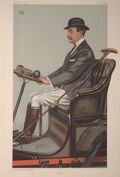 The works administration building on Barlby Road is palatial. Now a block of offices known as Ladbroke Hall, its interiors as well as the exterior may be inspected today. High above the main entrance is Shrewsbury and Talbot's personal crest, a registered trademark, and used on all London Talbot radiator shells. Sunbeam-Talbot, later Sunbeam, kept it in use until the end of their production in 1967.[4][page needed] The brick workshops were given a saw-tooth roof line, the roof glazed to maximise natural light. It was equipped with the most modern machine tools and the administration building's reception area was laid out like a miniature palace with marble Ionic columns and gilded frescoes and its stained glass windows were etched with the Shrewsbury and Talbot coat of arms.[4][page needed] |
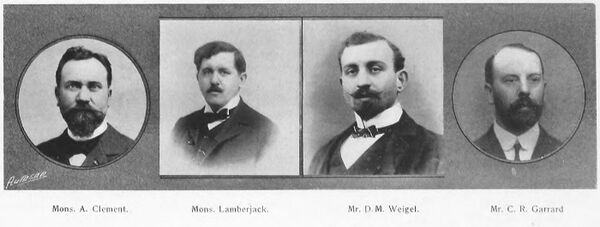
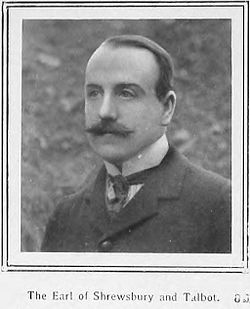
Production
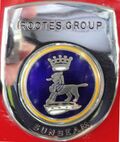
Weigel was appointed managing director and Charles Riley Garrard works manager of Clément-Talbot. Kensington assembly got under way in 1904 initially using imported components. In December 1904 speaking at their annual trade dinner in the presence of all directors the Earl described Clément-Talbot as "partly-controlled by French interests".[8] At that time production was entirely British made except for the engines imported from France. The first wholly British designs were made in 1907. However, in 1908 the opportunity was taken to equip new cars with a very successful new Clément-Bayard engine of L-head design with greatly improved performance. Its more compact combustion chamber gave faster ignition and allowed higher compression ratios. Talbots could now match, even beat Vauxhalls and Sunbeams in competition[4][page needed]
Cars offered by Clément-Talbot London (1904–1916)
Cars made in France are marked with an asterisk
- Information assembled from The Autocar Buyer's Guide and published in Appendix V, Ian Nickols and Kent Karslake, Motoring Entente, Cassell, London 1956

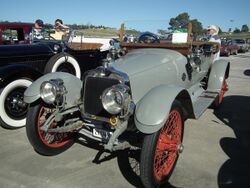


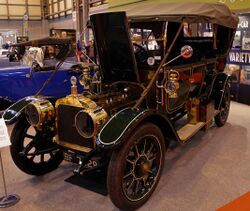

thumb|1915 Talbot 25/50 tourer
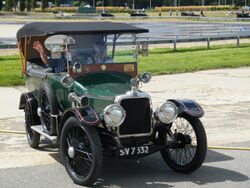

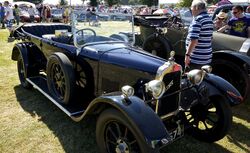
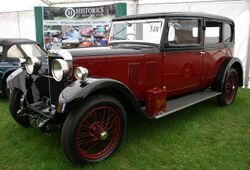
| Name | Cyl | Cubic capacity | Bore and stroke | Tax h.p. | Brake h.p. | Years in production | Speeds | Wheelbase | Track |
|---|---|---|---|---|---|---|---|---|---|
| 7 hp | 2 | 1004 | 80 x 100 | 7.9 | 1905–1906 | 3 | 70 in (1778 mm) | ||
| 8 hp | 2 | 1004 | 80 x 100 | 7.9 | 1904–1906 | 3 | 78 in (1981 mm) | ||
| 8/10 hp * | 2 | 1248 | 85 x 110 | 9 | 1907–1907 | 3 | 96 in (2438 mm) | 51 in (1295 mm) | |
| 9 hp | 2 | 1885 | 100 x 120 | 12.4 | 1905–1905 | 3 | |||
| 10 hp | 2 | 1885 | 100 x 120 | 12.4 | 1905–1906 | 3 | |||
| 10 hp | 2 | 1885 | 100 x 120 | 12.4 | 1908–1908 | 4 | 110 in (2794 mm) | 53 in (1346 mm) | |
| 10/12 hp | 2 | 1885 | 100 x 120 | 12.4 | 1907–1907 | 4 | 93 in (2362 mm) | 53 in (1346 mm) | |
| 10/14 hp * | 4 | 1591 | 75 x 90 | 14 | 1907–1907 | 3 | 108 in (2743 mm) | 51 in (1295 mm) | |
| 11 hp | 2 | 1526 | 90 x 120 | 10 | 1904–1904 | 3 | |||
| 12 hp | 4 | 2409 | 80 x 120 | 15.9 | 1905–1915 | 4 | |||
| 12 hp | 4 | 2724 | 85 x 120 | 17.9 | 1905–1905 | 4 | |||
| 12 hp | 4 | 2724 | 85 x 120 | 17.9 | 1906–1906 | 4 | 104 in (2642 mm) | ||
| 12 hp | 4 | 2724 | 85 x 120 | 17.9 | 1906–1906 | 3 | 88 in (2235 mm) | ||
| 12 hp * | 4 | 2409 | 80 x 120 | 15.9 | 1908–1908 | 3 | 114 in (2896 mm) | 55 in (1397 mm) | |
| 12 hp | 4 | 2409 | 80 x 120 | 15.9 | 1909–1909 | 4 | 103.5 in (2629 mm) | 50 in (1270 mm) | |
| 12 hp | 4 | 2409 | 80 x 120 | 15.9 | 1910–1910 | 4 | 110 in (2794 mm) | 51 in (1295 mm) | |
| 12 hp | 4 | 2409 | 80 x 120 | 15.9 | 1911–1912 | 4 | 108 in (2743 mm) | 51 in (1295 mm) | |
| 12 hp | 4 | 2409 | 80 x 120 | 15.9 | 1913–1914 | 4 | 112 in (2845 mm) | 51 in (1295 mm) | |
| 12 hp | 4 | 2409 | 80 x 120 | 15.9 | 1915–1915 | 4 | 112 in (2845 mm) | 52 in (1321 mm) | |
| 14 hp | 4 | 2409 | 80 x 120 | 15.9 | 1904–1904 | 4 | |||
| 15 hp | 4 | 2976 | 90 x 117 | 20.1 | 1907–1907 | 4 | 98 in (2489 mm) | 55 in (1397 mm) | |
| 15 hp | 4 | 2976 | 90 x 117 | 20.1 | 1908–1908 | 4 | 106 in (2692 mm) | 55 in (1397 mm) | |
| 15 hp | 4 | 2976 | 90 x 117 | 20.1 | 1909–1909 | 4 | 116 in (2946 mm) | 55 in (1397 mm) | |
| 15 hp | 4 | 2976 | 90 x 117 | 20.1 | 1910–1910 | 4 | 116 in (2946 mm) | 55 in (1397 mm) | |
| 15 hp | 4 | 3561 | 90 x 140 | 20.1 | 1911–1912 | 4 | 118 in (2997 mm) | 55 in (1397 mm) | |
| 15 hp | 4 | 3561 | 90 x 140 | 20.1 | 1913–1913 | 4 | 119 in (3023 mm) | 55 in (1397 mm) | |
| 15-20 hp | 4 | 2610 | 80 x 130 | 15.9 | 1914–1914 | 4 | 112 in (2845 mm) | 51 in (1295 mm) | |
| 15-20 hp | 4 | 2610 | 80 x 130 | 15.9 | 1915–1915 | 4 | 121 in (3073 mm) | 52 in (1321 mm) | |
| 16 hp | 4 | 3053 | 90 x 120 | 20.1 | 1905–1905 | 4 | |||
| 20 hp | 4 | 3053 | 90 x 120 | 20.1 | 1904–1904 | 4 | |||
| 20 hp | 4 | 3770 | 100 x 120 | 24.8 | 1906–1906 | 4 | 92 in (2337 mm) | 55 in (1397 mm) | |
| 20 hp | 4 | 3770 | 100 x 120 | 24.8 | 1907–1907 | 4 | 117 in (2972 mm) | 55 in (1397 mm) | |
| 20 hp | 6 | 3614 | 80 x 120 | 23.8 | 1910–1910 | 4 | 120 in (3048 mm) | 55 in (1397 mm) | |
| 20 hp | 6 | 3614 | 80 x 120 | 23.8 | 1911–1911 | 4 | 122 in (3099 mm) | 55 in (1397 mm) | |
| 20 hp | 6 | 3614 | 80 x 120 | 23.8 | 1912–1912 | 4 | 123 in (3124 mm) | 55 in (1397 mm) | |
| 20 hp | 6 | 3614 | 80 x 120 | 23.8 | 1913–1913 | 4 | 124 in (3150 mm) | 55 in (1397 mm) | |
| 20-30 hp | 4 | 3561 | 90 x 140 | 20.1 | 1914–1915 | 4 | 127 in (3226 mm) | 55.5 in (1410 mm) | |
| 24 hp | 4 | 4398 | 100 x 140 | 24.8 | 1905–1905 | 4 | |||
| 24 hp | 4 | 4398 | 100 x 140 | 24.8 | 1906–1906 | 4 | 110 in (2794 mm) | 55 in (1397 mm) | |
| 24/30 hp * | 4 | 4398 | 100 x 140 | 24.8 | 1907–1907 | 4 | 119 in (3023 mm) | 55 in (1397 mm) | |
| 25 hp | 4 | 4155 | 105 x 120 | 27.3 | 1908–1908 | 4 | 117 in (2972 mm) | 55 in (1397 mm) | |
| 25 hp | 4 | 4155 | 105 x 120 | 27.3 | 1909–1909 | 4 | 116 in (2946 mm) | 55 in (1397 mm) | |
| 25 hp | 4 | 4447 | 100.5 x 140 | 25 | 1910–1910 | 4 | 120 in (3048 mm) | 55 in (1397 mm) | |
| 25 hp | 4 | 4447 | 100.5 x 140 | 25 | 1911–1912 | 4 | 118 in (2997 mm) | 55 in (1397 mm) | |
| 25 hp | 4 | 4447 | 100.5 x 140 | 25 | 1913–1913 | 4 | 119 in (3023 mm) | 55 in (1397 mm) | |
| 25-30 hp | 4 | 4447 | 100.5 x 140 | 25 | 1914–1914 | 4 | 127 in (3226 mm) | 55.5 in (1410 mm) | |
| 25-30 hp | 4 | 4447 | 100.5 x 140 | 25 | 1915–1915 | 4 | 132 in (3353 mm) | 55.5 in (1410 mm) | |
| 25-40 hp | 6 | 3614 | 80 x 120 | 23.8 | 1914–1914 | 4 | 132 in (3353 mm) | 55.5 in (1410 mm) | |
| 25-50 hp | 6 | 3921 | 80 x 130 | 23.8 | 1915–1915 | 4 | 139 in (3531 mm) | 55.5 in (1410 mm) | |
| 27 hp | 4 | 4942 | 110 x 130 | 30 | 1904–1904 | 4 | |||
| 35 hp | 4 | 6333 | 120 x 140 | 35.7 | 1905–1905 | 4 | |||
| 35 hp | 4 | 6333 | 120 x 140 | 35.7 | 1906–1906 | 4 | 116 in (2946 mm) | 55 in (1397 mm) | |
| 35 hp | 4 | 5428 | 120 x 120 | 35.7 | 1908–1911 | 4 | 118 in (2997 mm) | 55 in (1397 mm) | |
| 35/45 hp * | 4 | 6333 | 120 x 140 | 35.7 | 1907–1908 | 4 | 125 in (3175 mm) | 55 in (1397 mm) | |
| 50/60 hp * | 4 | 8624 | 140 x 140 | 48.6 | 1907–1908 | 4 | 129 in (3277 mm) | 57 in (1448 mm) |
Sold out
In autumn 1919 A Darracq and Company (1905) agreed terms for their purchase of all the shares in Clément-Talbot as of 31 July 1918.[9] Auguste Oddenino, Regent Street restaurateur and businessman was, by then, a major shareholder in Clément-Talbot.[4][page needed] Adolphe Clémente-Bayard's Levallois factory did not flourish after the Armistice of 11 November 1918. He lost interest in motor manufacturing. In 1921 he sold his works at Levallois to André Citroën, while the Earl of Shrewsbury and Talbot died the same year.
In 1920 London's Darracq added Sunbeam Motor Car Company to its enterprise and renamed itself S.T.D. Motors. Shareholders and subsequent commentators were at loss to explain the commercial advantages given by the combination. Each of the three companies continued to operate independently. S.T.D.'s products were made in respectively, Wolverhampton, London and Paris. Anthony Blight believes Coatalen was drawn back to full-time efforts at S.T.D. by the possibility of racing cars under three brand names and of two nationalities. He had not long retired from his chief engineer post at Sunbeam and was now a design consultant in Paris in his native France.[4][page needed]
Automobiles Talbot Suresnes
The process of dropping the Darracq name for the Paris products was begun in early 1919 when new cars were badged Talbot-Darracq. In 1920 Darracq was dropped altogether from Talbot-Darracq. Owen Clegg at Suresnes, Paris, would design new cars to be built in Suresnes and Kensington.[4][page needed]
Louis Coatalen who had remained a director of S.T.D. joined S.T.D. Motors as chief engineer and blocked Clegg's new designs. Coatalen's principal interest was a new Sunbeam racing car and, of course, a whole new range of products for Wolverhampton and Paris. Kensington would have to build a small car for the utility market. The new utility Talbot would be designed in Paris by Coatalen's freshly assembled team.[4][page needed]
Clément-Talbot London continue
At first the Kensington factory kept its employees busy converting wartime ambulances to Talbot touring cars. When that ran out they had to revert to their prewar models, which were luxury cars and almost impossible to sell in the new slump of mid-1920. They were asked to build the two new 3-litre straight eight S.T.D. Grand Prix cars and a 1½-litre variant – all to wear a Talbot radiator.[4][page needed]
Post war designs
- 8-18 a Paris design
a small fast chic "utility" car it sold only to country doctors and professional men. The lively 970 cc engine ran very sweetly. Designed in Paris its lack of a differential burst tyres broke spring mountings and gave drivers humiliating battles at corners. It was also fifty per cent too expensive for the "utility" class. A made-in-Barlby-Road Talbot it also turned up from Acton (W & G Du Cros) with a different-shaped radiator as a locally assembled Suresnes Darracq.[4][page needed]
- 10-23 a Roesch amelioration
a bored out 8-18 engine, 1074 cc, a differential, a longer and stronger wheelbase and chassis with the back springs properly tied on. 2½ cwt heavier, 280 lb (130 kg) it was slower but seated four. It was a commercial success.[4][page needed]
- 12-30 the first Talbot Six and another Paris design
an 8-18 with two more cylinders, 1454 cc. Weight and price were both up 75 per cent, power up 50 per cent. Mitigated by "delightful" gearbox, and light and accurate controls. Further mitigated the following year by an increased bore so its capacity was now 1612 cc. Neither popular nor successful it is only remembered for being the first Talbot Six.
Cars built by Clément-Talbot London (1919–1938)
- Information assembled from The Autocar Buyer's Guide and published in Appendix V, Ian Nickols and Kent Karslake, Motoring Entente, Cassell, London 1956
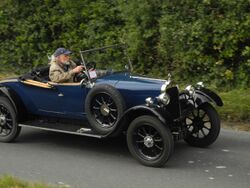
1074 cc, first registered December 1926


| Name | Cylinders | Cubic capacity | Bore and stroke | Tax horsepower | Brake horsepower | Years in production |
|---|---|---|---|---|---|---|
| 16 | 4 | 2614 | 80 x 130 | 15.9 | — | 1914–1915 1921–1921 |
| 36 | 6 | 3922 | 80 x 130 | 23.8 | 50 | 1915 1921–1921 |
| 14 | 4 | 1955 | 72 x 120 | 12.9 | — | 1921–1921 |
| 8-18 | 4 | 970 | 57 x 95 | 8 | 20 | 1922–1926 |
| 10-23 | 4 | 1074 | 60 x 95 | 8.9 | 23 | 1923–1926 |
| 12-30 | 6 | 1454 | 57 x 95 | 12 | — | 1922–1924 |
| 12-30 | 6 | 1612 | 60 x 95 | 13.4 | 30 | 1924–1924 |
| 16-50 | 6 | 2540 | 70 x 110 | 18.2 | — | 1924–1924 |
| 18-55 | 6 | 2540 | 70 x 110 | 18.2 | — | 1925–1925 |
| 14-45 | 6 | 1666 | 61 x 95 | 13.8 | 46 | 1926–1935 |
| 20-60 | 6 | 2916 | 75 x 110 | 20.9 | — | 1926–1928 |
| 18-70 | 6 | 2276 | 69.5 x 100 | 18 | 60 | 1930–1930 |
| 90 | 6 | 2276 | 69.5 x 100 | 18 | 93 | 1930–1937 |
| 75 | 6 | 2276 | 69.5 x 100 | 18 | 70 | 1931–1937 |
| 105 | 6 | 2969 | 75 x 112 | 20.9 | 100 | 1931–1937 |
| 65 | 6 | 1666 | 61 x 95 | 13.8 | 46 | 1932–1935 |
| 95 | 6 | 2969 | 75 x 112 | 20.9 | 95 | 1933–1936 |
| 110 | 6 | 3378 | 80 x 112 | 23.8 | 123 | 1935–1937 |
| Eight | 8 | 4504 | 80 x 112 | 31.7 | 150 | 1936–1936 |
| 10 | 4 | 1185 | 63 x 95 | 9.8 | 41 | 1936–1939 |
| 3-litre | 6 | 3181 | 75 x 120 | 20.9 | 78 | 1937–1938 |
Some of the last true Talbots
 |
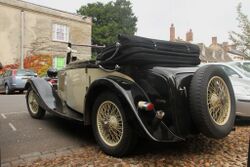 |
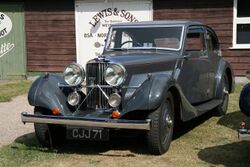 |
 |
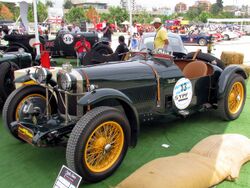 |
 |
 note the flat floor |
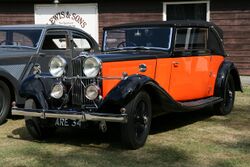 body by James Young |
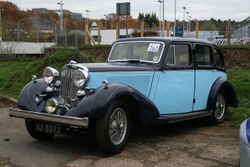 note sloped Rootes radiator grille and neatly creased Humber mudguards |
Notes
- ↑ Jean-Émile Lamberjack 1869–1912. Emile and his brother Dominique, whose father ran a restaurant on Paris's rue de Clichy, began by racing bicycles then motorcycles and started exporting French cars. Emile helped establish a Michelin tyre factory in Milton New Jersey. Until the end of the 19th century manufacturers preferred customers to visit the manufacturer's own premises and put down a one-third deposit. Once the flow of buyers became a nuisance they found it necessary to appoint agents. Emile became Fiat's first agent in Paris (his business ultimately became part of Fiat's SIMCA) and a Mercedes agent in December 1904. (p691, Automobile Topics, 26 December 1903) Dominique became Bugatti's Paris agent.
- ↑ "Daniel M. Weigel was managing director of the British Automobile Commercial Syndicate Limited. Started motoring in 1893 and has been a prominent figure in the business side of the industry ever since. In 1900 in conjunction with the Earl of Shrewsbury and Talbot he formed the British Automobile Commercial Syndicate Limited. Introduced the first "Clément-Talbot" car into England in 1901. In 1902 formed the firm of J Rothschild et fils Limited opening a London branch of that famous firm of Parisian motor-carriage builders. Is now connected with the firms of J Rothschild et fils Limited and the Maison Talbot, of the latter of which he is the managing director. Club A.C.G.B.&I." The Motoring Annual and Motorist's Year Book, 1904
References
- ↑ 1.0 1.1 1.2 CLEMENT TALBOT LTD HISTORY on Talbot Owners Club
- ↑ "Auguste Lucas' Palmares at CyclingRanking.com". CyclingRanking.com. https://www.cyclingranking.com/rider/106189/auguste-lucas.
- ↑ "Jean-Émile Lamberjack's Palmares at CyclingRanking.com". CyclingRanking.com. https://www.cyclingranking.com/rider/44802/jean-emile-lamberjack.
- ↑ 4.00 4.01 4.02 4.03 4.04 4.05 4.06 4.07 4.08 4.09 4.10 4.11 Anthony Blight (1970). Georges Roesch and the Invincible Talbot. London: Grenville Publishing. ISBN 978-0903243018.
- ↑ History of Ingestre - PDF, page 109
- ↑ According to The Automotive Journal, 1 November 1902, the company was incorporated on 11 October 1902
- ↑ All British Industry. The Courier and Argus, 31 December 1903; Issue 15765; p. 6.
- ↑ Clement-Talbot Automobile Works, The Automotor Journal, 3 December 1904
- ↑ A. Darracq & Company (1905), Limited. The Times, Thursday, 4 Dec 1919; Issue 42274; p. 25
External links
- The specially-built Barlby Road Works, North Kensington about 1930
- Image of 1903 Clement-Talbot Type CT4K at Bonhams auction. 18HP Four cylinder, 'Roi-D'Italie Tonneau. Coachwork by J.Rothschild et Fils, Paris Registration no. AP 107. Sold for £606,300
- Video of Percy Lambert's world record at Brooklands 15 February 1913
 |

